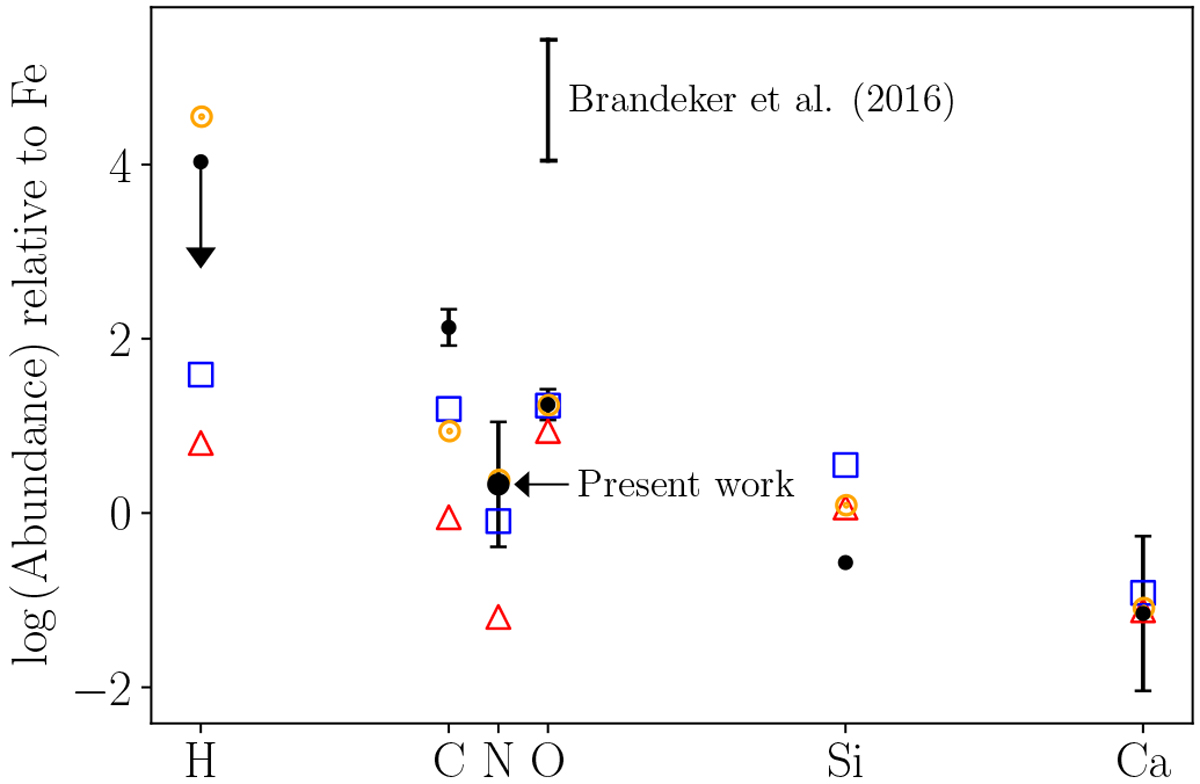Fig. 2

Abundances of the β Pic gas disc (black circles) compared to solar abundances (orange Sun symbols), CI chondrites (red triangles) and Halley dust (blue squares). The abundances are given relative to iron (Fe), and the figure is adapted from Fig. 2 of Roberge et al. (2006). The OI detection by Brandeker et al. (2016), who used the Herschel telescope, represents a range of possible values that depend on the spatial distribution of the O gas in the CS disc. The OI column density estimate by Roberge et al. (2006; represented by the black circle) could represent a lower column density limit because of the challenges associated with measuring optically thick OI lines (see Brandeker 2011 and Fig. S1 in Roberge et al. 2006). The CI chondrites consistently show low abundances for the volatile elements H, C, N, and O, which is expected as they were in a gaseous state when the meteorite formed and therefore did not condense or accrete.
Current usage metrics show cumulative count of Article Views (full-text article views including HTML views, PDF and ePub downloads, according to the available data) and Abstracts Views on Vision4Press platform.
Data correspond to usage on the plateform after 2015. The current usage metrics is available 48-96 hours after online publication and is updated daily on week days.
Initial download of the metrics may take a while.


